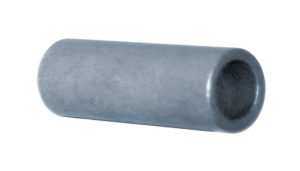
Spacers are commonly used in the aerospace manufacturing industry. As shown in the adjacent photo, they look like cylindrical pieces of metal with a hollow interior. They are available in different sizes, with some spacers being wider or longer than others. Nonetheless, they are all cylindrical with a hollow interior. For a better understanding of spacers and how they work, keep reading.
What Are Spacers?
Spacers are rod-like components that are used to create space between two or more parts. They are used in applications where additional space is needed.
A typical spacer consists of a cylindrical piece of metal — aluminum, carbon steel, stainless steel, etc. — with a hollow interior. You can place a spacer between two or more parts to separate the parts. Thanks to its rigid design, the spacer will keep the parts separated so that they don’t touch.
How Spacers Work
Spacers use a simple method of operation to separate the parts with which they are used. They don’t contain any moving components, nor do they require any special tools. Instead, spacers are placed between the respective parts where they form a physical barrier.
In addition to creating space, spacers are also used in positioning applications. If you need to position a screw or bolt, for instance, you may want to use a spacer. Placing the fastener through the spacer will prevent it from going too deep. The spacer will essentially limit the depth at which the fastener can be driven.
Some of the most common applications for spacers include the following:
- Separating parts
- Positioning fasteners
- Electrical and avionics
- Assemblies for aerospace parts, such as fuselages and wings
Spacers vs Standoffs: What’s the Difference?
They may look similar, but spacers and standoffs aren’t the same. Both spacers and standoffs are cylindrical with a hollow interior. The difference is that standoffs are threaded, whereas spacers are not threaded.
Standoffs contain threads inside of them. Using these threads, they can hold bolts and similar threaded fasteners in place. Spacers, on the other hand, have a smooth interior that’s devoid of threads. You can still use them to separate parts and position fasteners, but spacers don’t have internal threading.
In Conclusion
Spacers play an important role in the aerospace manufacturing industry. They ensure the safety, effectiveness, and endurance of aircraft structures by offering necessary spacing and backing between different components.



